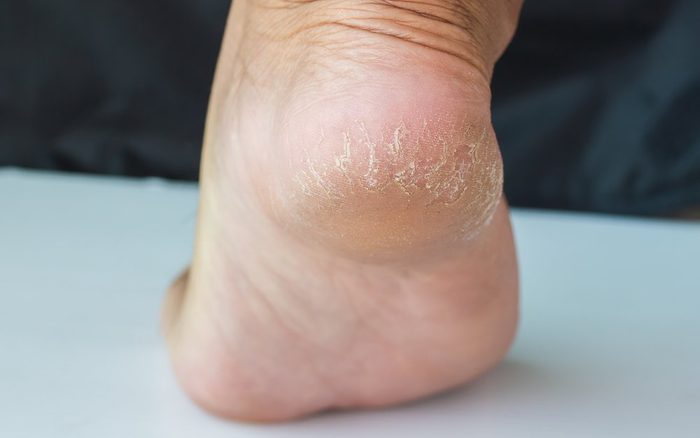
Cracked heels are common
Don’t worry that you’ve somehow mistreated your feet because your heels are dry and cracked: “Dry heels—aka xerosis—is very common in the feet and heels because they’re constantly under pressure from shoes and walking,” says New York City podiatrist Emily Splichal, DPM. She adds that cracked heels tend to appear more often during the summer, as feet spend more time exposed and in sandals. “Without proper exfoliation and hydration, the rate of callus or dry heel formation can accelerate,” she says. And of course, if you wear high heels, they do a number on your feet.
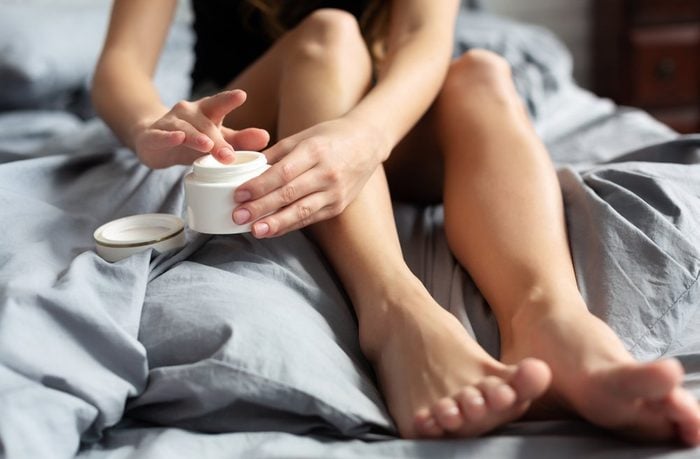
Use creams designed for the feet
A regular daily body moisturizer is not going to do enough to benefit cracked heels. Podiatrist Jacqueline Sutera, DPM, a Vionic Innovation Lab member recommends using creams that are specially formulated for tougher foot skin, including Amlactin and Kerasal. “These have gentle but effective acids that help break down the callous a little at a time,” she says.
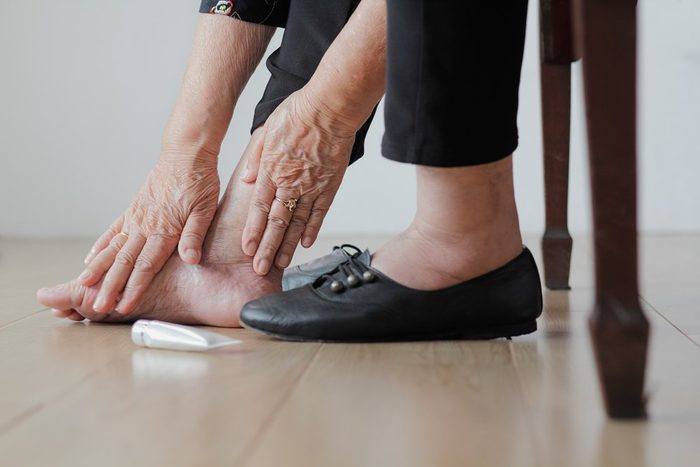
Look for key ingredients
If you’re battling cracked heels, you’ll need to slather moisturizer on your feet daily. Another option is a multitasking product that contains urea, lactic acid, or salicylic acid. Dr. Splichal suggests patients pick up Arm & Hammer Foot Care Moisturizer + Gentle Exfoliators, which is also spiked with coconut oil for silky skin.
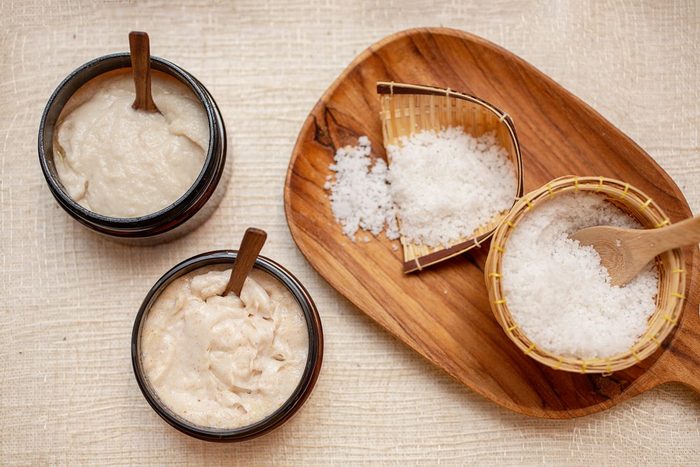
Try a peel
The cult favorite, Baby Foot Exfoliant Foot Peel, contains lactic and glycolic acids to deeply exfoliate feet. In fact, if you catch a glimpse of the impressive photos, you’ll see that it causes feet to peel in a big way. Dr. Splichal gives it the okay if you want to try it, but she recommends testing a small area first before using it all over your feet. Relieve foot pain with these natural home remedies.
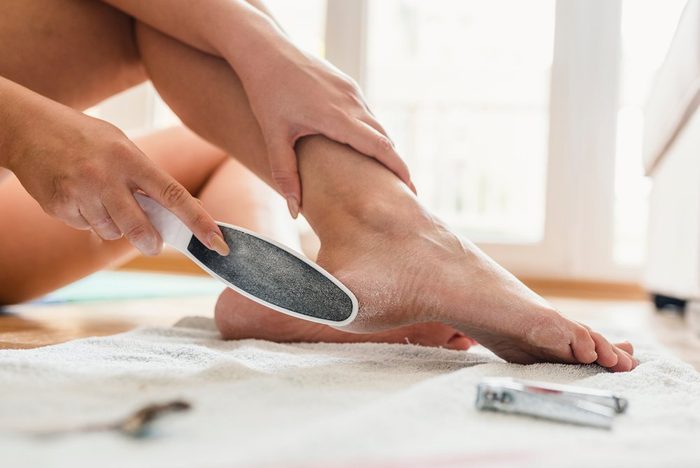
File away rough patches
You can help the smoothing process along with a foot file, says Dr. Sutera, who recommends using it one to two times per week when you’re in the first stages of treating cracks. “Remember to go in one direction and not back and forth, which can rip up skin more,” she says. You can use a manual file or battery-operated one—Dr. Sutera likes the Amope Pedi Perfect Electronic Foot File to gently buff away dead skin. You could also try making your own foot scrub.
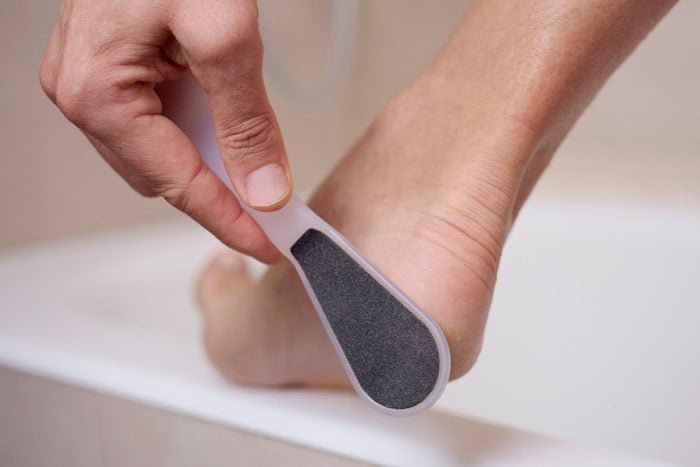
Replace foot files regularly
The tools you use on your feet should remain yours and yours alone—don’t share them with family, advises Dr. Sutera. She also recommends cleaning and drying them thoroughly after using and replacing them every two to three months. Another hygiene tip: “If you get a pedicure, bring your own tools,” she says.
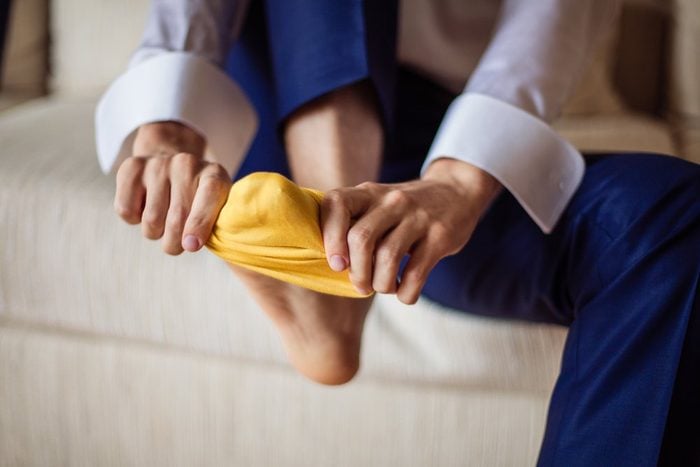
Soften at night
Waking up with softer feet is possible, says Dr. Splichal. Her tried-and-true method is to apply foot moisturizer and wrap your feet with a silicone gel wrap designed for heels. (You can also use plastic wrap.) Put on socks and sleep. Your feet will feel better in the morning, but it may take several weeks of treatment for severely dry and cracked heels to recover, she says. “Treating heels consistently is the most important thing,” she says. Here are some home remedies for corns and calluses, too.
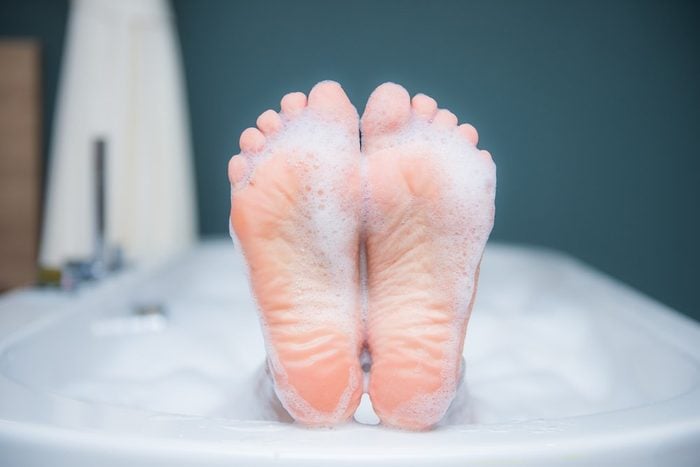
Don’t forget post-shower
After you step out of your morning shower, head for the tub of Vaseline. “It’s a sealant, which locks in the moisture the skin absorbs in the shower,” says Dr. Splichal. If it’s a pre-bed shower, you can then wrap your feet in plastic wrap (or use the heel wraps).
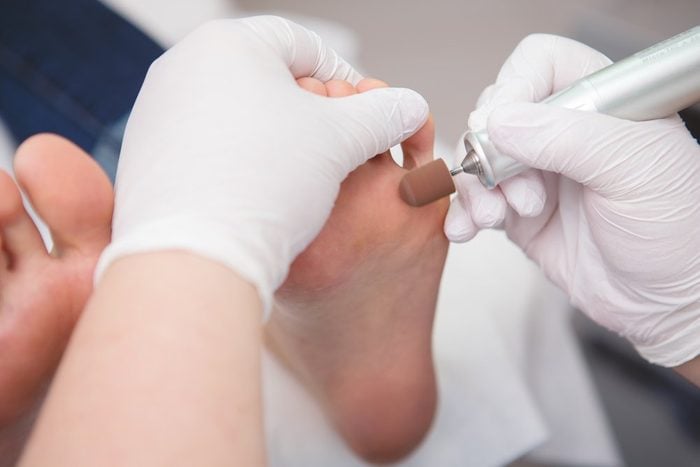
When you need more help
Sometimes, there’s only so much you can do yourself before you need to call in a professional. “If the cracks are not improving or they are worsening or bleeding, seek help from your podiatrist,” says Dr. Sutera. And if you have poor circulation, diabetes, or another chronic condition that weakens your immunity, you shouldn’t treat your feet at home. In this case, see a doctor.
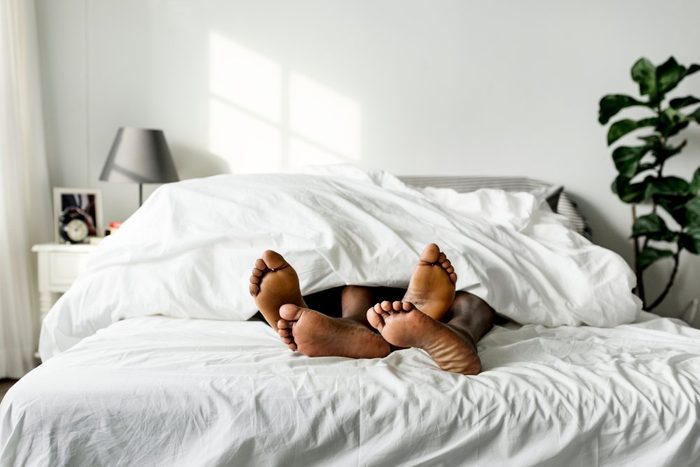
How to prevent heel cracks
“There is no permanent cure for cracks,” says Dr. Sutera. Your best hope is to moisturize daily, gently file your feet, and treat them as needed. And if you’re looking for ways to get your feet ready for sandal weather, here are 10 steps for the perfect DIY pedicure.
